SME Finance Policy Guide
SME Finance Policy Guide
SME Finance Policy Guide
Create successful ePaper yourself
Turn your PDF publications into a flip-book with our unique Google optimized e-Paper software.
84 GLOBAL PARTNERSHIP FOR FINANCIAL INCLUSION<br />
Figure 8 Strength of legal rights and credit information infrastructure<br />
8.0<br />
7.0<br />
6.0<br />
5.0<br />
4.0<br />
3.0<br />
2.0<br />
1.0<br />
0<br />
6.7<br />
5.2<br />
4.7<br />
50<br />
40<br />
30<br />
20<br />
10<br />
0<br />
4.1<br />
3.1<br />
1.3<br />
High Income Middle Income Least Developed<br />
Countries<br />
Bars indicate standard deviation across countries<br />
High Income Middle Income Least Developed<br />
Countries<br />
Bars indicate standard deviation across countries<br />
Source: Doing Business<br />
The Enabling Environment<br />
for <strong>SME</strong> <strong>Finance</strong><br />
Two “Doing Business” indices measure differences in<br />
the legal framework and credit reporting systems. The<br />
“Strength of Legal Rights” index measures the degree<br />
to which collateral and bankruptcy laws protect the<br />
rights of borrowers and lenders and thus facilitate<br />
lending by reducing the probability of default or<br />
reducing losses of lenders given default. Effective collateral<br />
regimes contribute to <strong>SME</strong> finance by reducing<br />
the risks and losses of lenders. The Strength of Legal<br />
Rights index measures the efficiency of collateral law<br />
(Figure 8), and is lower for LDCs. The “Depth of Credit<br />
Information” index measures rules and practices<br />
affecting the coverage, scope, and accessibility of credit<br />
information available through either a public credit<br />
registry or a private credit bureau. Well-functioning<br />
credit information systems reduce adverse selection<br />
and moral hazard, and can contribute to both an<br />
expansion of credit and a reduction in lending costs.<br />
Not surprisingly, as figure 8 shows, LDCs scores are<br />
lower than those in higher-income countries. Figure 8<br />
also shows substantial variation across countries in the<br />
same income groups, particularly in terms of credit<br />
information.<br />
The results are in line with other indicators showing<br />
that LDCs face a more severe set of challenges and constraints<br />
in providing enabling policy guides for <strong>SME</strong>s.<br />
Indicators particularly relevant for financial access are<br />
the time taken and cost incurred in registering property<br />
and enforcing contracts. Studies show that countries<br />
with lower entry costs and lower costs of<br />
registering property have a larger <strong>SME</strong> sector in manufacturing.<br />
99 As shown in Figures 9 and 10, such costs<br />
are higher than average in LDCs. These indicators also<br />
show considerable variation across countries in the<br />
same income groups.<br />
The combination of costly and lengthy registration<br />
and enforcement processes, along with weak legal<br />
rights, acts to constrain <strong>SME</strong> lending in LDCs. <strong>SME</strong>s<br />
are more likely to fail at acquiring new land or buildings<br />
compared to large and medium firms. Difficulties<br />
in acquiring property and securing titles and construction<br />
permits means that firms are less competitive<br />
and less able to expand production and<br />
employment. This can contribute to financing gaps,<br />
not only because such firms have lower asset values<br />
that can be used to secure loan contracts, but also<br />
because they are less productive, rendering them less<br />
creditworthy. Registering and transferring real<br />
99 Ayyagari, Beck and Demirgüç-Kunt (2007)



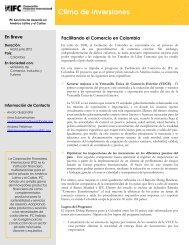
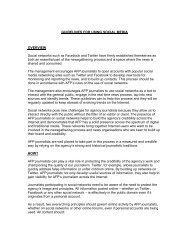
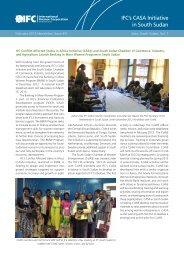

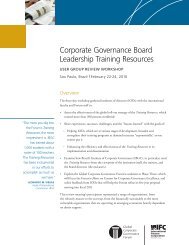



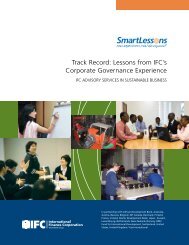
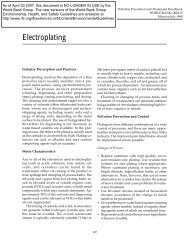

![Print a two-page fact sheet on this project [PDF] - IFC](https://img.yumpu.com/43449799/1/190x245/print-a-two-page-fact-sheet-on-this-project-pdf-ifc.jpg?quality=85)


